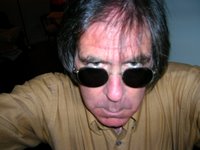April 5
 On the 5th in 1930, in India, Mohandas Karamcha Gandhi, at the head of his followers, began the Salt March to Dandi. Upon arriving at the sea on the 6th, Gandhi dipped his hand into the ocean, scooped a bit of mud into his hand, raised his arm and called out “With this, I am shaking the foundations of the British Empire”. Gandhi’s birthday, October 2, 1869, is widely recognized as the International Day of Non-violence.
On the 5th in 1930, in India, Mohandas Karamcha Gandhi, at the head of his followers, began the Salt March to Dandi. Upon arriving at the sea on the 6th, Gandhi dipped his hand into the ocean, scooped a bit of mud into his hand, raised his arm and called out “With this, I am shaking the foundations of the British Empire”. Gandhi’s birthday, October 2, 1869, is widely recognized as the International Day of Non-violence.In an arranged marriage, Gandhi married Kasturba Makhanji when they were both thirteen years old. They would have four children. At the time of their marriage, Katurba was illiterate and Gandhi taught her to read and write.








